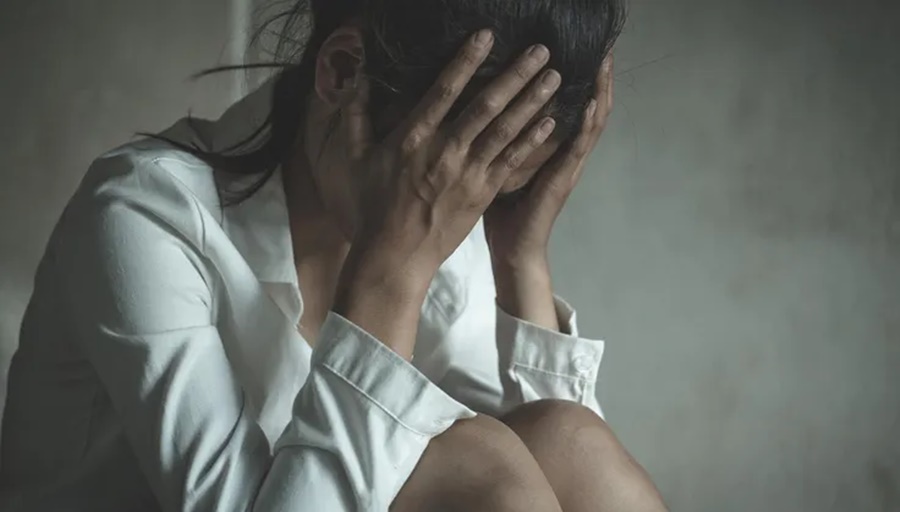Panic attack: Symptoms and treatment
All of us are familiar with brief panics. / Panic attack: Symptoms and treatment

In the case of panic disorders, however, those affected suffer from recurring attacks with severe symptoms. which can help. / Panic attack: symptoms and treatment
Fear is an uncomfortable feeling. But it has an important function: it draws our attention to danger and can even save lives. This is the case, for example, when we call an ambulance with heart pain or flee in a critical, threatening situation.
Feelings of anxiety also often occur in everyday life: in the form of worries about being fired, making a fool of yourself during the presentation or losing your partner.
When does fear become a problem?
Anxiety and panic are beyond normal when they come on suddenly and with great intensity, over and over again for no apparent reason. Psychologists then speak of an anxiety disorder or anxiety disorder. This should be taken seriously and dealt with. A common and well-known type of panic attack, which can also be referred to as an anxiety attack or anxiety attack, is what is known as agoraphobia, also known as claustrophobia.
Anxiety disorders are one of the most common mental illnesses alongside depression. Panic disorder is a form of anxiety disorder and is associated with recurring panic attacks.
Causes of Panic Attacks
Panic is an intense form of fear of a threat. This can be real or only exist in the minds of those affected. It is estimated that around four percent of the world’s population will be affected by panic disorders at some point in their lives – women more often than men. People who are generally very anxious are more at risk.
The main triggers for panic disorder are:
traumatic childhood experiences
severe stress in adulthood, such as the death of a loved one
genetic factors
a disturbed messenger substance activity in certain brain regions
The symptoms usually appear for the first time between the ages of 20 and 30. The expression is often most intense in the mid-30s. After the age of 45, the symptoms subside.
Obsessions: When small tics become big problems
What Triggers a Panic Attack?
Patients are often unable to predict when a panic attack will occur. It may be that you are sitting relaxed on the sofa and suddenly your heart begins to race. It is often the so-called triggers that initiate the panic attack. For some, this may be the elevator, contact with a particular animal, crowds, or situations associated with uncomfortable sensations and experiences. Stress and inner tension favor a new attack, as do caffeine, alcohol and nicotine.
Symptoms: How does a panic attack manifest itself?
Panic disorder is characterized by repeated attacks of severe anxiety (panic attacks). A panic attack is accompanied by strong uncontrollable physical and psychological symptoms.
The most common symptoms include:
palpitations and palpitations
shortness of breath
feelings of suffocation
Throat and chest tightness
chest pain
dizziness
feeling light-headed
uncertainty
feeling faint
Feeling of unreality (derealization)
Feelings of alienation (depersonalization)
weak knees
sweating and hot flashes
Tremble
nausea
Fear of losing control
fear of dying
afraid of going insane
A panic attack usually lasts several minutes – sometimes longer. How frequent and how severe the symptoms of a panic attack are and which symptoms occur together with the strong feelings of anxiety varies from patient to patient. The panic attack can be so severe that those affected experience fear of death or a life-threatening condition such as a heart attack.
Panic attack from fear of fear
If the panic disorder or anxiety disorder is left untreated, it can worsen as the illness progresses. Those affected limit themselves more and more in order to prevent attacks and panic. They avoid certain situations or places, avoid people and become increasingly isolated. The quality of life suffers as a result. The fear of the next panic attack can even be so strong that it triggers one. Doctors speak of anticipatory anxiety here.
Those affected get ever deeper into a pull of fears, reduced self-esteem, feelings of being at the mercy, loss of trust in themselves and others. The relationship with family and partner, but also with friends and colleagues often suffers as a result. Difficulties falling asleep and staying asleep make the situation even more difficult. There is a risk of alcohol and other substances, such as tranquilizers, being used to relieve anxiety.
Panic disorder is often accompanied by claustrophobia
According to the professional associations and specialist societies, panic disorder is associated with claustrophobia (agoraphobia) in about two-thirds of cases. Those affected fear certain situations or places and avoid them. Mostly they are places where it is difficult to get a doctor or situations from which one fears not getting out quickly enough or causing an embarrassing sensation.
Treating Panic Disorders: How to Get Rid of Panic Attacks
If there is a suspicion of panic disorder, the family doctor is the first point of contact. This refers the patient to a therapist or a psychosomatic clinic for clarification. If the doctors determine a panic disorder after carrying out various diagnostic tests, doctors usually recommend psychotherapy or, more precisely, cognitive behavioral therapy.
Medications, mostly antidepressants such as serotonin reuptake inhibitors (SSRI) and benzodiazepines, often accompany the treatment of panic disorder and support psychotherapy.
The aim of the treatment is for the patient to get to know the clinical picture within the therapy and to develop their own psychological “tools” with which they can overcome their fears. He also learns strategies for cushioning and surviving a panic attack, for example with the help of special breathing exercises. In addition, the therapist looks at which unresolved conflicts lie behind the panic disorder. These are usually the cause of the fears. If they are processed, the patient can regain his self-determination and independence.
These symptoms indicate pinworms
The rubella virus can cause these symptoms
What is erysipelas? Symptoms, treatment, nutrition

